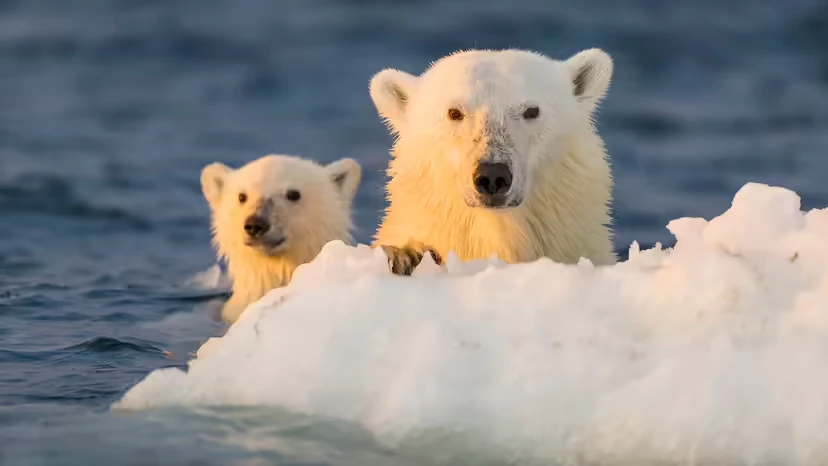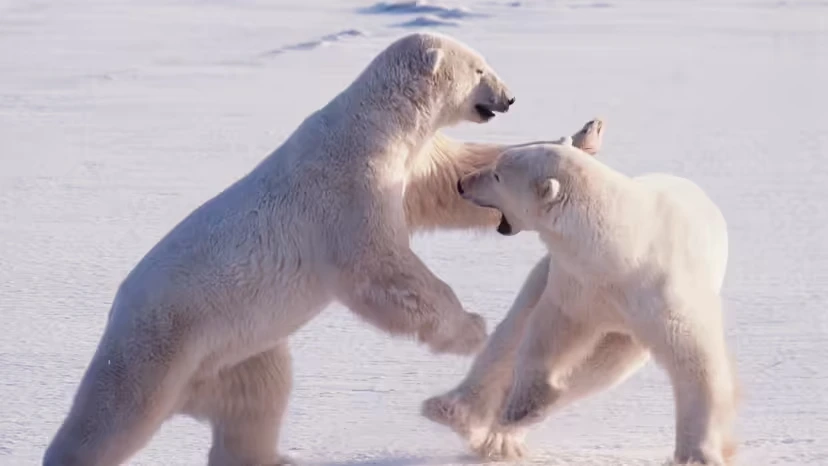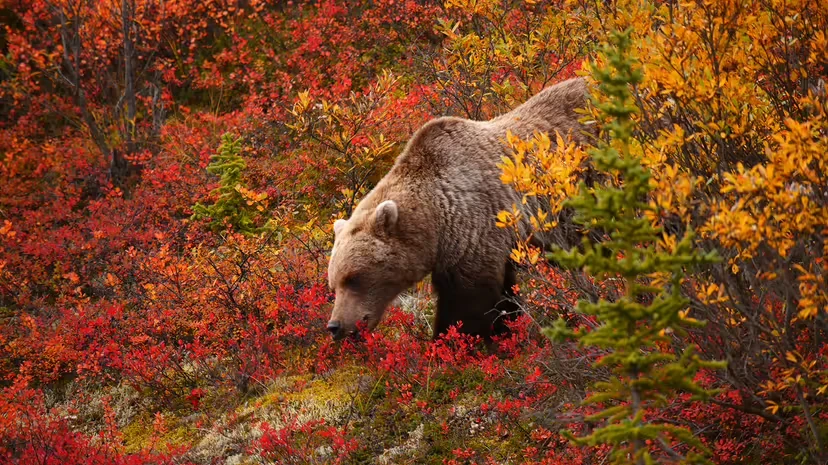Short answer: Polar bears are generally bigger and more specialized sea-ice hunters; grizzlies (brown bears) are typically stronger all-rounders on land with the broader tool-kit (digging claws, omnivorous diet, huge territorial confidence). Who’s “tougher” depends entirely on where they meet.

Biggest typical male
Interior “grizzly”: ~400–800 lb (180–360 kg)
Kodiak/big coastal brown bears: 900–1,400 lb (410–635 kg), exceptional rivals to polar bears
Polar bear (Ursus maritimus): 900–1,500 lb (410–680 kg) commonly; exceptional >1,700 lb
Grizzly/brown bear (Ursus arctos): varies by region
Height (standing)
Polar: up to ~10 ft (3 m)
Large brown bears: similar; interior grizzlies shorter
Bite & weapons
Both exceed 1,000 psi bite force; polar bears have longer necks & bigger forepaws for seal hunting; grizzlies have longer, stronger digging claws.
Temperament
Both are apex predators; grizzlies are often more assertive on land; polar bears are more curious/persistent when hungry on sea-ice coasts.
Range: Arctic coasts/pack ice of Canada, Alaska (USA), Greenland, Russia, and Norway (Svalbard).
Design: Thick blubber, hollow guard hairs, massive insulating paws that act like snowshoes and swimming paddles.
Lifestyle: Ice-dependent; follows seals across drifting floes; among the strongest long-distance swimmers in mammals.
Range: Much of Alaska/Canada; remnant contiguous U.S. (Greater Yellowstone, Northern Rockies); across Eurasia for other brown-bear subspecies.
Design: Longer, scimitar-like foreclaws for digging roots, ground squirrels, and for defense; pronounced shoulder hump = huge forelimb power.
Lifestyle: Omnivore strategist—berries, roots, fish runs, carrion, ungulates when opportunity strikes.

Diet: Mostly ringed & bearded seals (calorie-dense blubber).
Tactics: Waits at breathing holes; smell can detect prey under snow/ice; explosive paw strike and skull bite.
Diet: Seasonally flexible—spring carrion & calves, ground squirrels, berries, salmon where available; will challenge wolves or other bears for carcasses.
Tactics: Stamina chases for small prey, ambush at streams, and powerful digging; opportunistic scavenger and top competitor.
On sea ice / coastal pack: Polar bear advantage. It’s home turf; traction, paw spread, and hunting style all favor the polar bear.
Interior forests/plains: Grizzly advantage. Better maneuverability on varied ground; more experience with terrestrial fights and competitors.
Similar sizes = stalemate risk. Most real encounters end in posturing and avoidance; carcass disputes can go either way, with size, age, and individual boldness deciding it.

What & why: Polar × grizzly hybrids appear where ranges overlap, largely in the Canadian Arctic.
Look: Cream-to-tawny coat, intermediate skull, longer claws than polar bears, more omnivorous foraging than a typical polar bear.
How common: Documented but rare in the wild; genetics show occasional cross-breeding, not a widespread blend.
Polar bears: Sea-ice loss challenges hunting success; many populations under pressure despite protections.
Grizzlies (U.S. interior): Recovered in some regions under protections; conflicts tied to food access and human overlap.
Carry bear spray and know how to use it; keep clean camps; secure attractants (coolers, garbage, fish).
On trails: Make noise, travel in groups, give bears space (never approach, especially mothers with cubs).
Coasts/Arctic communities: Follow local guidance; polar bears are curious and can investigate settlements—professional deterrence matters.
Bigger overall: Polar bears, with Kodiak/coastal brown bears close behind.
Tougher fighter: Context-dependent. Polar bears dominate the ice; grizzlies rule the rough ground.
Best survivor: Grizzlies win on adaptability; polar bears are unmatched specialists—peerless where sea ice still prevails.
animal tags: polar bear
We created this article in conjunction with AI technology, then made sure it was fact-checked and edited by a Animals Top editor.